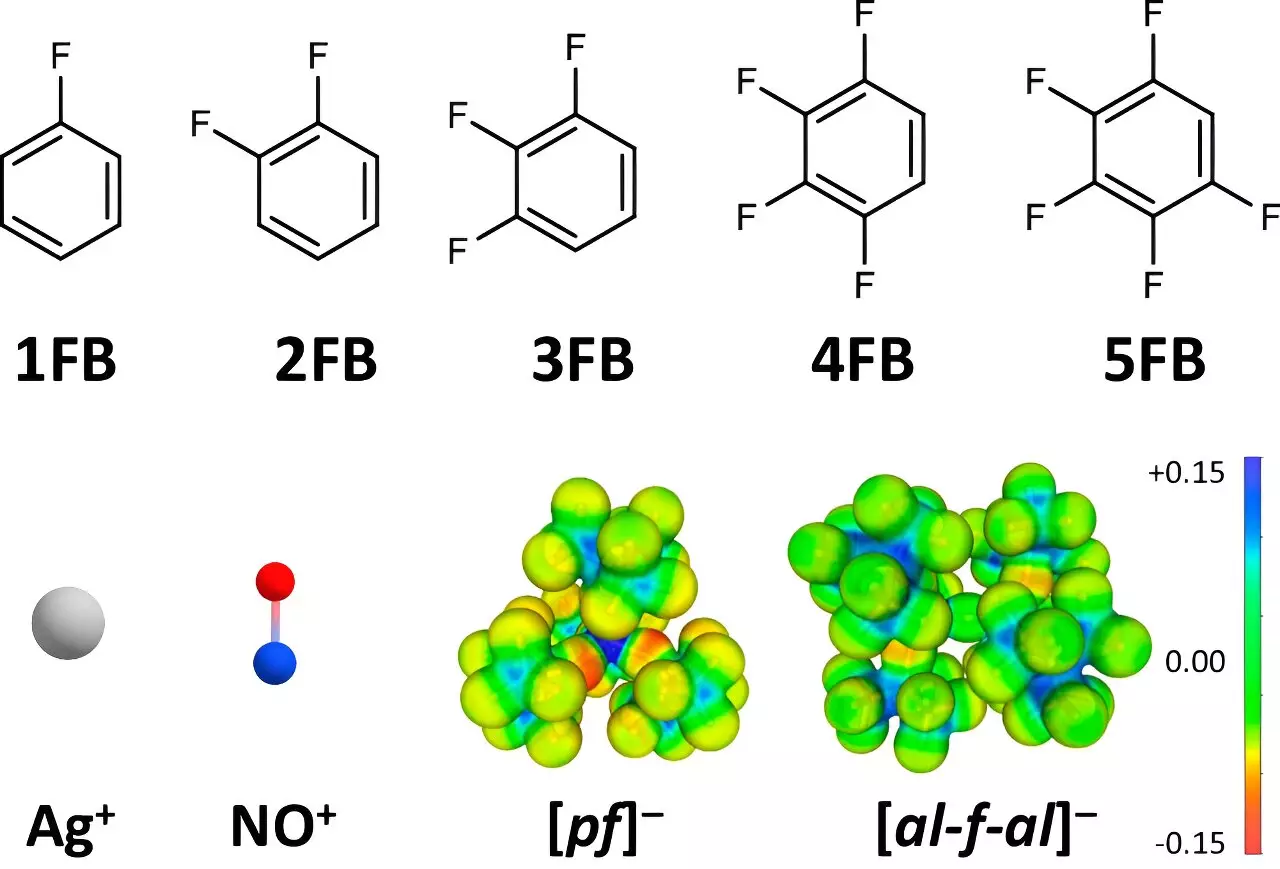A pioneering team of researchers, led by Professor Ingo Krossing from the University of Freiburg, is reshaping our understanding of oxidation potentials in coordination chemistry. Their recent study, published in *Nature Communications*, reveals a remarkable enhancement of the oxidation potential of positive ions, a breakthrough that could have vast implications in fields such as electrocatalysis and redox chemistry. By intelligently manipulating solvent and anion interactions, this team has pushed the boundaries of what is achievable, paving the way for novel applications in chemical research.
Traditionally, the oxidation potentials for positive ions like Ag⁺ and NO⁺ have been held back in conventional solvents, typically peaking at around +0.65 to +1.0 V versus the ferrocene standard (Fc⁺/0). This limitation stems from the strong interactions these ions have with their surrounding media, wherein the solvent and anion create an environment that stabilizes the ions, thereby inhibiting their oxidative capabilities. It is a well-established fact in coordination chemistry that the charge density and small size of these positive ions contribute to their strong interactions, effectively reducing their oxidation power.
In Krossing’s study, however, the research team adopted a novel approach by employing weakly coordinating anions (WCA) and specially chosen solvents to elevate the oxidation potential significantly. This strategic choice fundamentally alters the interactions between the positive ions and their environment.
Innovative Use of Fluorinated Solvents
The crux of this research lies in the employment of fluorinated benzene derivatives as solvents. This choice is not arbitrary; the incorporation of fluorine atoms leads to a unique electronic environment that allows for higher dielectric constants compared to conventional solvents. According to Dr. Johannes Hunger from the Max Planck Institute for Polymer Research, the team’s investigations into the dielectric properties of these fluorinated solvents demonstrated that compounds with multiple fluorine substitutions exhibit decreased interactions with positive ions while maintaining high dielectric performance.
The findings indicate that as the degree of fluorination increases—from mono to tetra-fluorinated varieties—the ability of these solvents to mitigate the interaction of positive ions with their surroundings substantially improves. Such a reduction in interaction allows the positive ions to retain much of their oxidative potential, which can result in unprecedented redox reactions.
The implications of these findings cannot be overstated. With the potential to achieve oxidation levels of up to +1.50 to +1.52 V, the researchers have opened the door to new avenues in chemical synthesis that were previously deemed unfeasible. The ability to conduct redox reactions with hard-to-oxidize substrates means that chemists can now explore new pathways in creating complex molecules, potentially leading to advancements in materials science, pharmaceuticals, and renewable energy systems.
Moreover, the enhancements in oxidation potential also suggest opportunities in electrocatalysis, where optimized redox properties can play a crucial role in improving the efficiency of energy conversion processes. Through better understanding and control of these interactions, this research may lead to the design of novel redox shuttles and mediators, further refining their applications across various industries.
The work presented by Professor Krossing and his team marks a significant advancement in the understanding of oxidation potentials in coordination chemistry. By focusing on weakly coordinating solvents and high-dielectric fluorinated compounds, they have not only increased the oxidation potential of ions like Ag⁺ and NO⁺ but also set the stage for revolutionary developments in chemical synthesis and catalysis. As the scientific community delves deeper into the nuances of electronegative interactions, we can anticipate a slew of innovations that could redefine how we approach chemical reactions and materials design. The research is a testament to the intricate interplay of chemistry and technology, and its potential applications could resonate through various fields for years to come.

